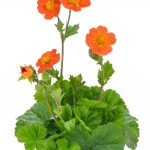Do Yourself a Fava
(See what we did there?)

Here’s why you should consider growing fava beans: They are protein-rich and tasty, and you are likely to eat more fava beans if you grow … Continue reading
We've got issues.

Here’s why you should consider growing fava beans: They are protein-rich and tasty, and you are likely to eat more fava beans if you grow … Continue reading
I imagine many gardens have some awkward little areas that are difficult to irrigate efficiently. Mine certainly does. Now that long, hot, dry summers are … Continue reading

In mid-July I visited Marietta and Ernie O’Byrne, to talk about their recently published book, A Tapestry Garden: The Art of Weaving Plants and Place. … Continue reading

When it comes to plant buying, I tend to be resistant to new introductions. I generally stick with varieties that have a track record in … Continue reading

Since I ranted earlier this spring about a geranium species you do not want in your garden, it seems only fair to feature some of … Continue reading

At a plant sale last year I found some nice specimens of Solomon’s seal wrongly placed on a table reserved for Oregon native plants. And … Continue reading

In response to my March column about the scourge of shining geranium, local resident Alan Van Zuuk has provided more detail on how to control … Continue reading

Years ago a chiropractor who was into nutrition told me that salads should be composed of at least nine ingredients. Or was it seven? Plain … Continue reading

A small but perniciously invasive plant is headed to a yard near you. And trust me, this is not a plant you want in your own … Continue reading

Cheer up! Yes, I know it’s bleak outside, but every day brings a few more minutes of daylight and new intimations of spring — and … Continue reading